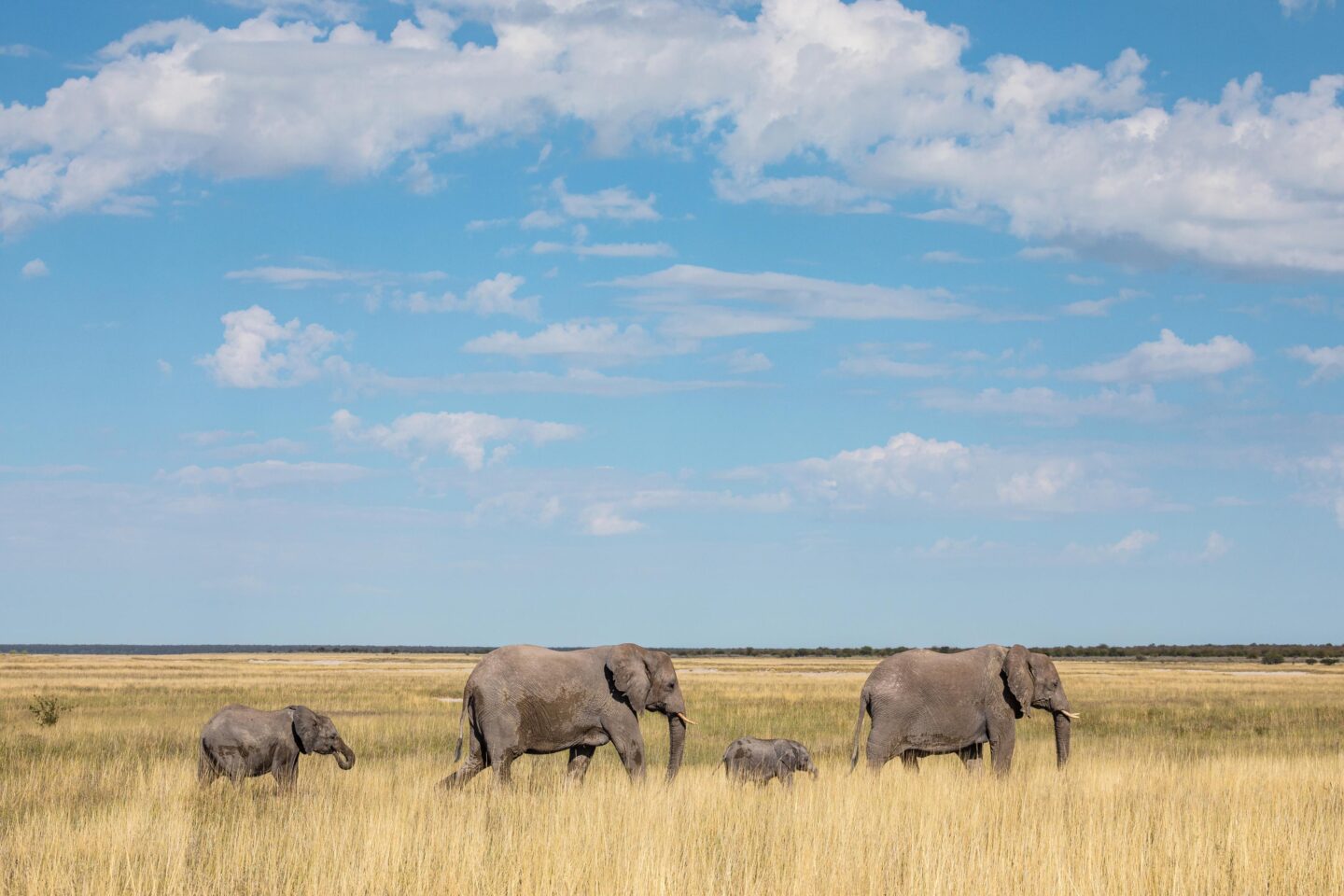

A Photo Essay of Etosha
From East to West
It’s difficult to describe Etosha National Park to someone who has never been there before. Of course, you can tell them what types of animals they might see, the kind of vegetation, or even try to explain the sheer vastness of the pan. Yet, it is impossible to convey the feeling you get when you are here — the excitement of watching a large male lion cross the road in the first rays of the morning sun, the sense of sheer desolation while observing a lone gemsbok walk across the dusty pan, or the peacefulness of watching giraffes in a field of purple-flowered wild sesame, pulling the plants, roots and all, from the ground and devouring them mid-air.
Text Le Roux van Schalkwyk | Photographs Le Roux van Schalkwyk
From the Winter 2024 issue
At more than 22,000 km², Etosha is a massive park and Namibia’s premier wildlife destination. To give some perspective, if you enter at Galton Gate, the westernmost entrance, you will need to drive around 330 km east to exit at Von Lindequist Gate. The changing landscape holds unlimited potential for awesome sightings.
Deciding to drive from one side of the park to the other in five days, we wanted to showcase what one could experience and how closely one could capture the feeling of Etosha through a series of images.
DOLOMITE
The grass is still green from the late rain and the veld is full of life. We have a picturesque sighting of an elephant bull resting underneath a camel thorn tree with some beautiful clouds overhead. As the sun is pulled down to the horizon, we drive into a purple field of wild sesame. Apart from the gemsbok and zebra, a dozen giraffes lower their long necks to pull out individual bushes. Raising their necks again, leaves, soil, and purple flowers rain to the ground as they chew.
The next morning, having heard lions roar close to the camp in the early morning hours, we are the first to leave camp. Driving in the direction of Dolomietpunt, we find two male lions lazily walking across the road and into trumpet thorn thickets.
At Dolomietpunt, playful zebras kicking up dust keep us entertained and glued to our cameras.
OKAUKUEJO
An early morning drive starts quietly as we see a yellow mongoose, loads of plains game, and giraffes feeding on trumpet thorns. Things quickly get exciting when we spot two honey badgers. Unfortunately, they move into the thickets before we can get a decent photo. Not much further on, we are lucky enough to see a pride of lions hiding in and under bushes from the late morning sun. The only one we have a clear view of is a male with a mane that looks permed. I thought the “perm-lion” would be my favourite sighting of the day.
Much later in the day, just before Rietfontein, we spot a white-masked blue wildebeest. Not sure how this happened, but the animal managed to get his entire face and horns caked with white Etosha clay. It gave the appearance of a bleached skull on legs.
HALALI
Late in the afternoon, we find a male lion lying by a zebra carcass while six or so females are resting under bushes not far away. Just before sunset, 13 hyenas suddenly appear. The lionesses get restless, but unfortunately, we need to get back to camp before the show starts.
NAMUTONI
A late afternoon drive to Fisher’s Pan gets us close to a secretary bird and a blue wildebeest as there are some soft raindrops. With the sun setting and blanketing the pan in an orange glow, small rain showers can be seen with groups of wildebeest etched out against the white clay.
The next morning, a last stop on the way out at Klein Namutoni waterhole rewards us with a beautiful sunrise scene. Five marabou storks are slowly wading through the water in front of three skittish giraffes trying to drink water while a zebra fight rages between two males in the background. TN






